As you know, my son and I participated in Richard Diaz’s Human Performance Running Clinic in March. Since then, we’ve trained hard. He has competed in a few track events, and we ran our first Spartan race together. We’ve stuck to the basics we learned while continuing to build the motor skills and mechanics needed to run injury-free.
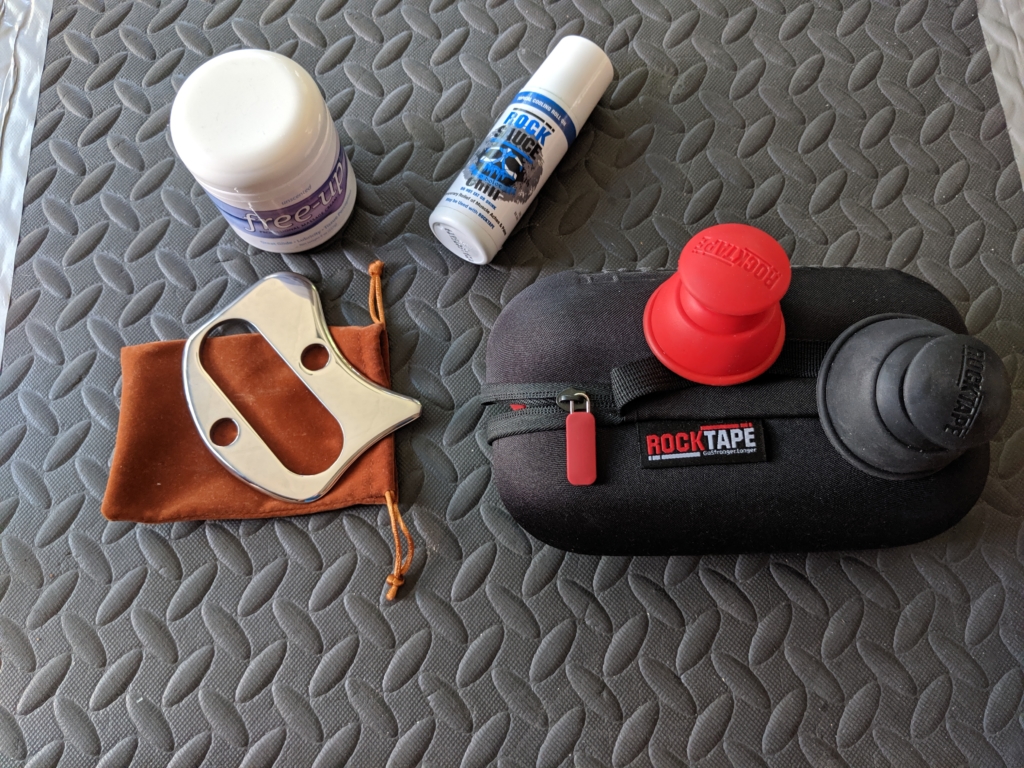
These are my go-to pre-hab and re-hab essentials
Off to the Races
About two months after the clinic, my son competed in the Medford Mile. This annual open event draws hundreds of runners of all ages to our local high school track. Heats were broken into age groups for runners age 18 and under. Adult heats were segregated by mile time estimates. My son ran in the 6:30 and under group. He smoked the field and felt really good. He led from the start. He could have gone faster than his 5:20, but since he never led a race pole to pole, he had no idea how to pace himself for top performance.
Then he ran my Medford Lakes Memorial Day 5K. His goal was to run a sub-19. The first-place runner came in at 17:54. My son came in 8th overall of a field of 253. The three guys just ahead of him came in bunched around 19:50. Since most of them were in the same age group, my son did not even place top 3. This race attracts fast runners from our area and the top 3 guys in my age group 50-59 also finished with times nearly as fast as the teenagers.

Top Teen and 50+ AG finishers
As for me, I’m the race director, so I didn’t get to run my own race. But I did get to do a lot of analysis with my son. In addition to the recovery tools I bought, he bought a Garmin HRM. We do a lot of video analysis of each other too. These are all things we learned at the Clinic.
Improvements
For the most part, my mechanics have improved to the point that my injuries have decreased significantly, my efficiency has increased, and my endurance has gone up as a result of heart rate control, proper pacing, and of course, those mechanics.
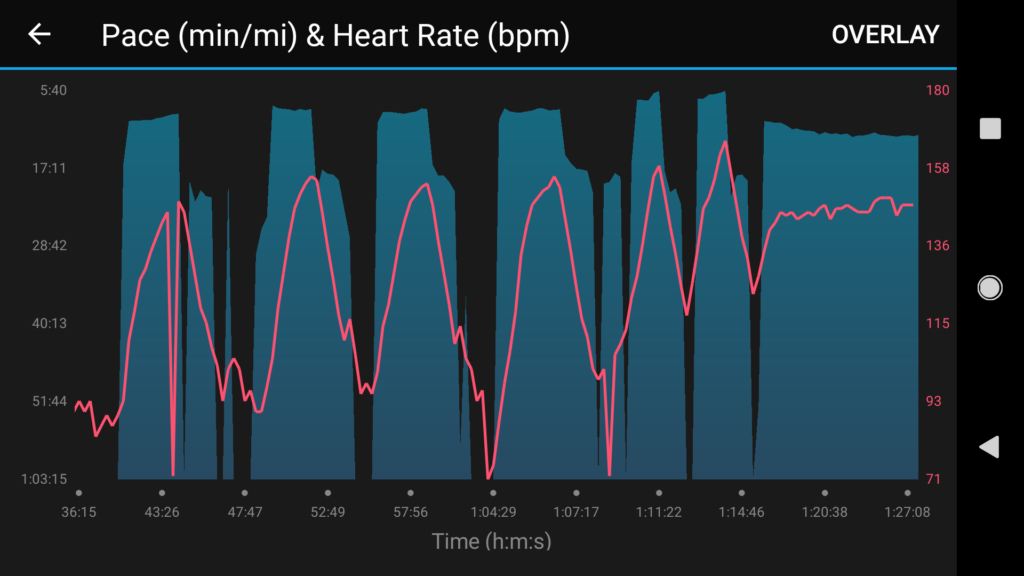
Combining heart rate, pace, and technique control in these 4x400s and 2x200s and mile cool-down
My son’s mechanics have also improved a great deal and remained very consistent. He can feel the zone now where everything clicks. I have sensed it once or twice since the clinic, but I have a lot more work to do overcoming years of bad mechanics. After the race, though, our focus was all about why he did not reach his goal. Why after all this training, the clinic, and the competition did he not break 19?
This is an important lesson for all who attend these clinics. The goal is to fix form and reduce injury as a result. In the long term, this opens up the training opportunity to get faster. But these were not speed clinics. And my son also realized that the speed work he was doing focused on a different race, the 800. He was dialed in for that one. But the 5K was very different. Mentally and mechanically, he was not trained to perform at the top of his game.
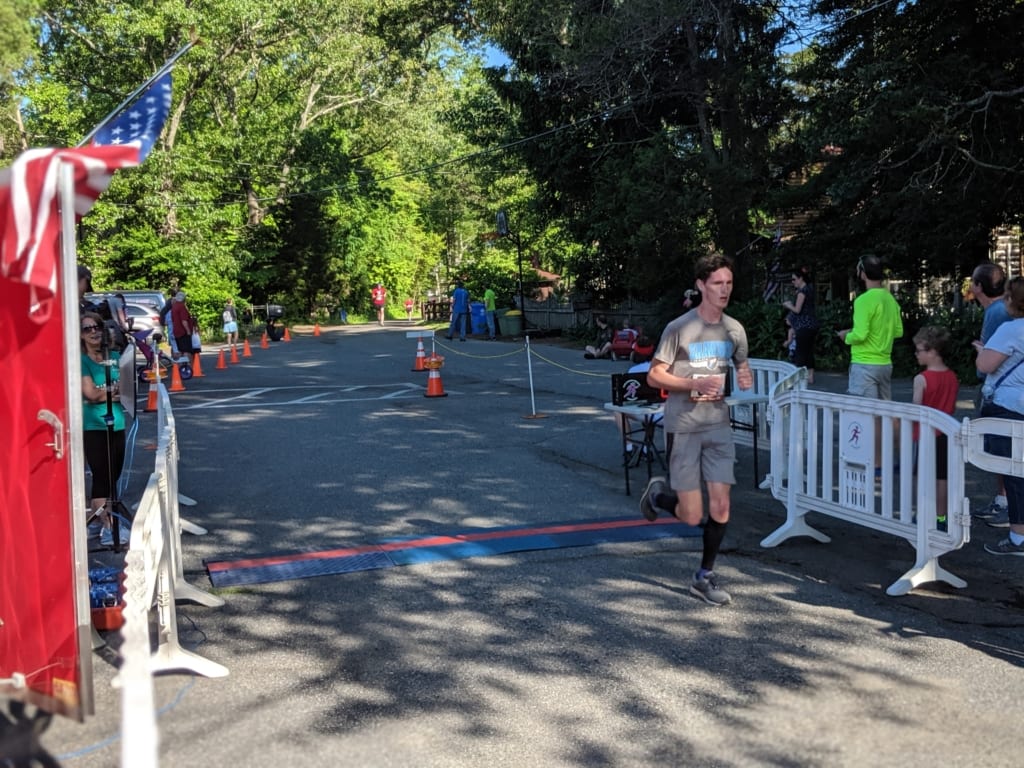
Aaron's 5K 60 days post DHP Running Clinic
The speed lesson was reinforced two weeks ago when we competed at the Palmerton Sprint. My son smoked the field as we left the starting gate. By 800 meters, he was well ahead of the corral. But he still had the remainder of that one-mile ascent of Blue Mountain to go. This time, the mountain smoked him. By the end of the race, he only beat me by 30 seconds. This also reinforced the overall fitness lesson. He is an exceptional runner, tuned in for short, flat runs. He now understands how much work he needs to do to become a climber. He also realizes how much work he has to put in to become an efficient obstacle tactician.
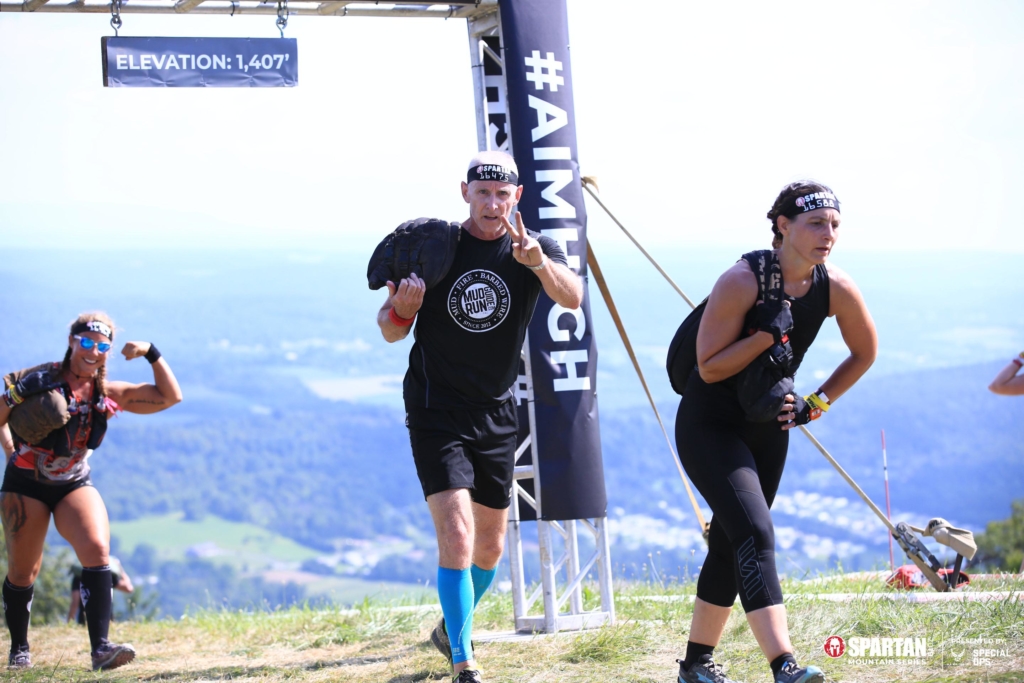
No stops – no flops this year!
That’s where we balance one another out. He is helping me to become a better, faster runner. I am helping him become stronger, powerful, and efficient in his upper body. Together, we are both focused on improving our climbing through hill and stadium training.
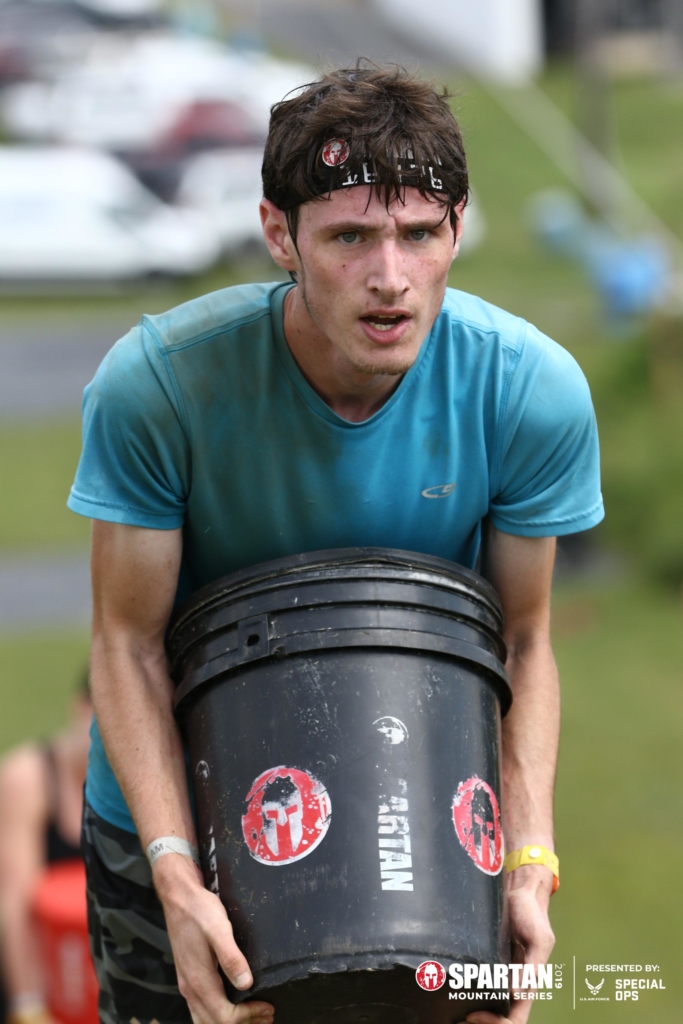
An area for technique improvement – the bucket brigade
While the running clinic's lessons will help us mechanically for any race, there was little to nothing there for helping us go faster for any specific race. That’s a different clinic. The mechanical clinics will help us increase speed as long as we put in the time, practice, and skill development to stay injury-free. Healthy runners can become faster runners by carefully maintaining and executing these basics consistently. This became very evident during Diaz’s clinic, where he had us do 100m sprint repeats.
Doing these, along with the other DHP drills, are incredibly dull to me. But they are exceptionally critical, so I do them consistently to maintain my mechanics and proper form. I notice a huge difference in my technical terrain downhill running now because I have stronger ankles, more confidence in foot landing, and overall feel for feedback through the chain.
In the Clinic, we called this natural running. I explained a bit of this in my review article back in March. Do you know why Richard Diaz walks around barefoot all the time? Because it’s natural. We ran natural drills during the clinic. We learned about sneakers that best represent “natural” in their form, fit, and function. Last night, my son bought a pair and then went for a two-mile run. He was ecstatic. “They were freeing!” was all he kept saying. He believes that they helped him in his running efficiency as measured by a decrease of 10bpm in his heart rate as compared to the same run/environmental conditions with his original sneakers.
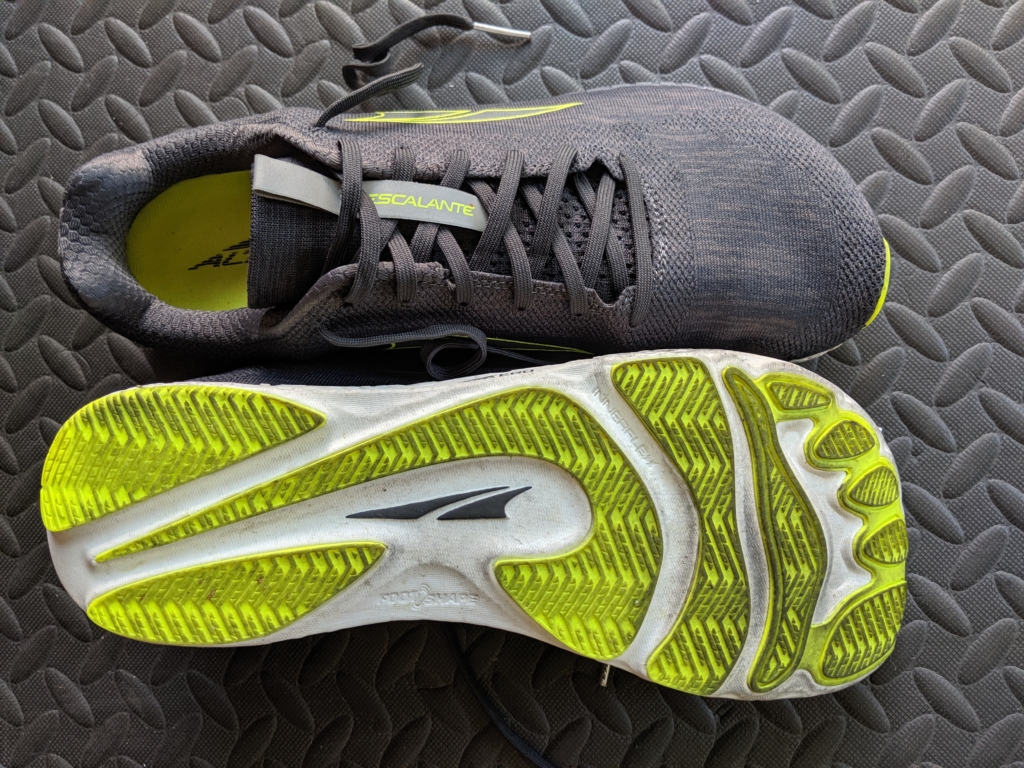
Zero Drop, huge toe box Altra Escalante
I want to follow up on that empirical hypothesis and see if it is repeatable and reproducible. And I want to try his sneakers and see for myself… But that’s another article!


Since this article speaks to my work and potential take away, let me offer a comment: I believe speed is a result of efficiently delivering force, primarily as a gift from gravity which also reduces cost. These outcomes, efficiency and economy provides sustainability.
With only a few days to influence a group my goal is to teach people how to stop hurting as a result of poor running mechanics. It so happens that I get messages from practitioners of my teaching almost daily reporting – zero pain and faster race results. I see this as motivation to continue my work. I appreciate MudGear and it’s contributors covering my journey.